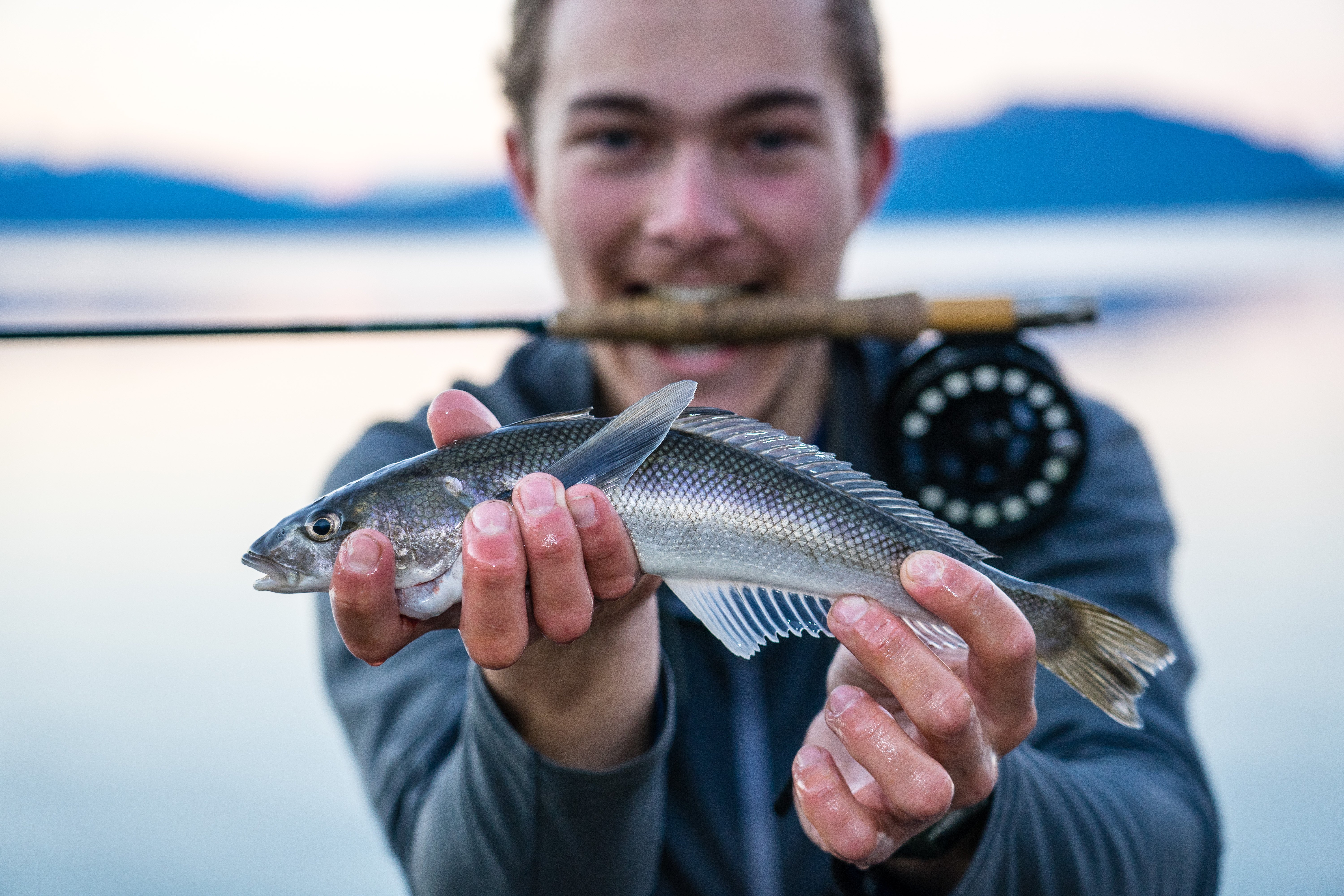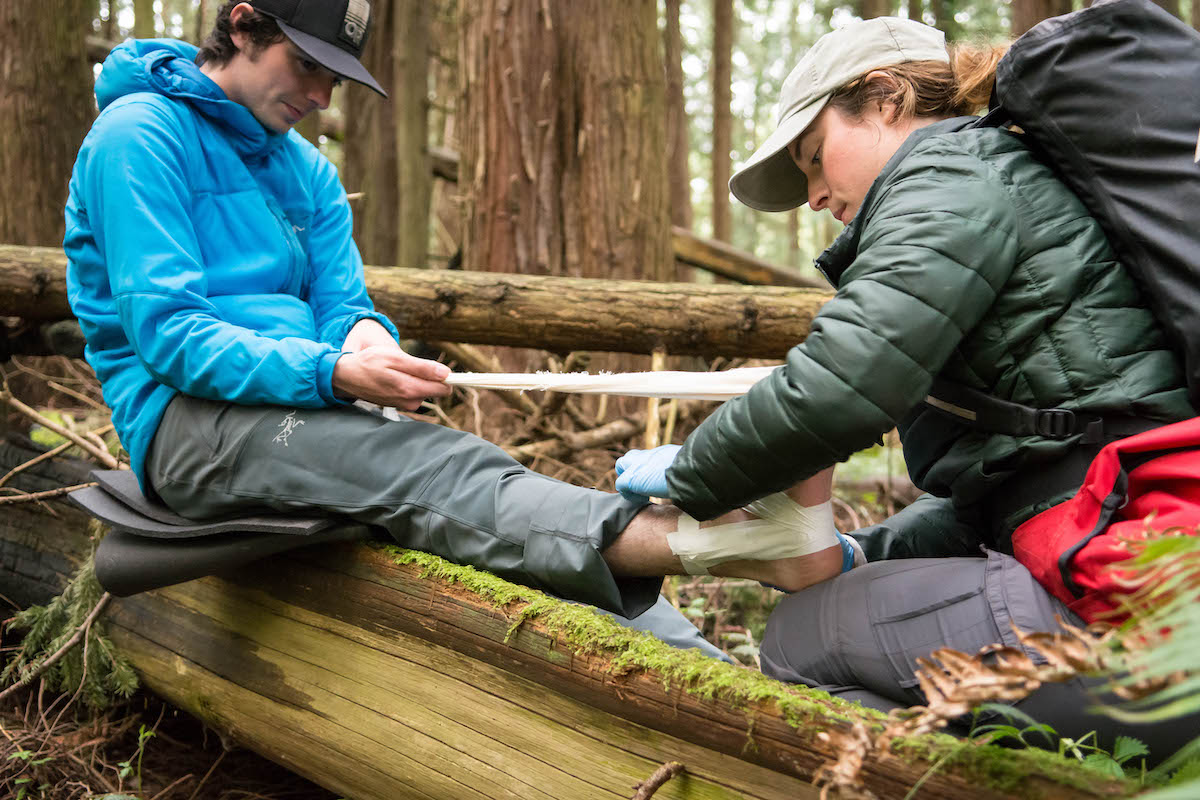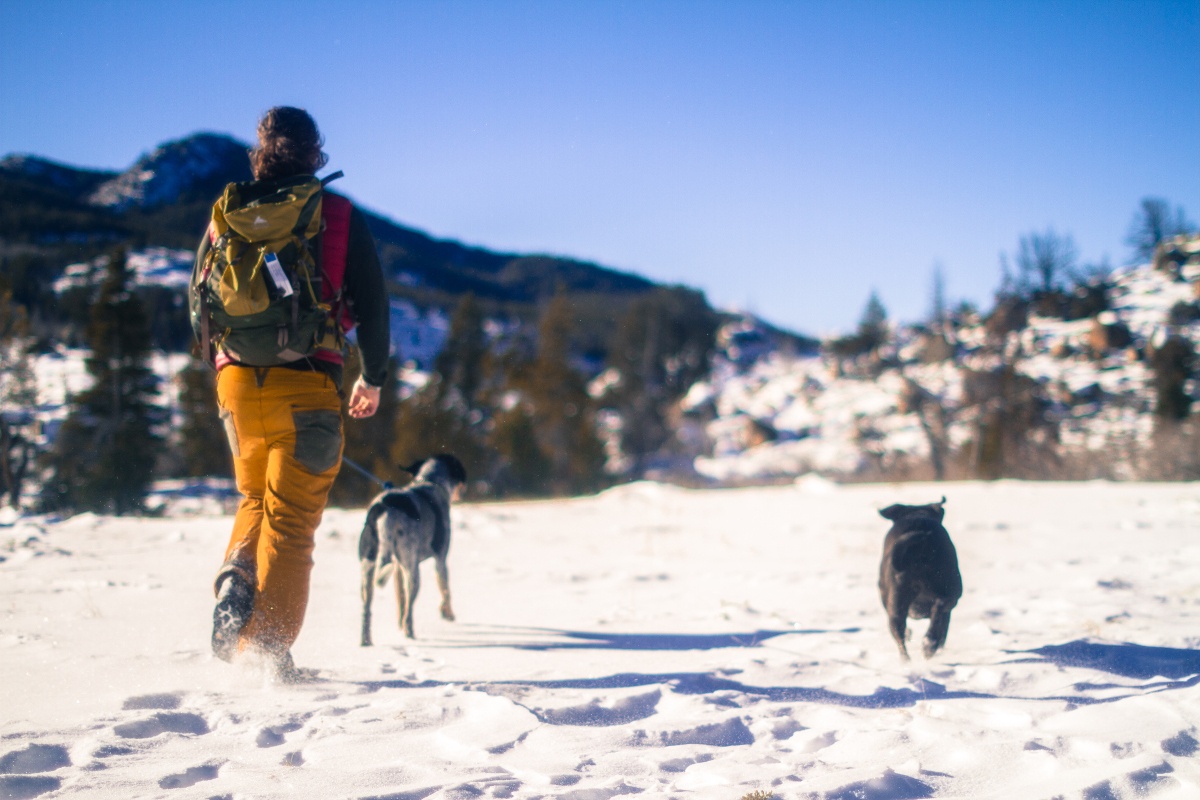
If you’re in the northern hemisphere, you’ve probably noticed the sun setting a little bit later each day. As an avid fly fisherman you might already be tying flies for the upcoming season. Even if you’ve never fly-fished before, NOLS Wilderness Medicine has advice for both beginners and experts so you can be prepared for the hobby’s common risks that are especially relevant in the early season.
Remember, first aid is a skill, and like all skills, it needs to be taught by professionals, as well as reinforced through proper education and practice. You can learn all the skills mentioned below in a NOLS Wilderness Medicine course.
Injuries While Finding Your Fishing Spot
It’s early spring, so you crunch through a spattering of snow on your way to the river. While navigating the riverbed’s snow-covered rocks, your foot falls through a patch of snow; you wedged your foot in between two rocks and your ankle moved in a way it shouldn’t move. You grimace in pain, wondering if you can walk on it (and also, if you can still fish today).
Whether it’s due to snow, snow melt, or rain, slippery surfaces are often unavoidable during the spring. Likewise, river levels are often higher. Lower water visibility and quicker moving currents in the spring can increase your chances of an athletic injury (i.e. sprains and strains), especially to ankles, feet, and legs.
Fear not, though! Depending on what your patient assessment reveals, you may be able to continue your trip.
What to do for athletic injuries
If you fall in the river and are able to move, even with pain, move to land. When assessing your injury, remember LAF (look, ask, feel). Some athletic injury symptoms include diffuse or specific pain, swelling and/or bruising, deformity, point tenderness, and wounds.
During your patient assessment, conduct a usability test on the injured part. If the injury is usable, consider taping it or using a brace, which will add support and help prevent further injury. If the injury is unusable, you should splint to immobilize the injury. Unusable injuries will need to be evaluated by a medical professional.

Prevention for athletic injuries
It’s imperative to move slowly while navigating slick and rocky terrain. Calculating your steps before taking them is key to avoiding athletic injuries, especially so you don't step on ice or a surface that can’t hold your weight.
You also need the proper equipment for your environment and the sport. Considering investing in a wading staff to ensure your stability on wet rocky areas. While in the water, you should have the proper wading boots for strong traction.
Injuries and Risks While in Water
As we’ve mentioned, rivers in the early fishing season can pose extra medical risks. Aside from athletic injuries, falling while fishing in a river creates opportunity for drowning. Extended time in the cold water also puts you at risk for immersion foot.
What to do for someone at risk of drowning
If you have the skills to remove a drowning patient from the water and can do so safely, bring the patient to land and begin your patient assessment. The most immediate concerns are the ABCs (airway management, breathing adequacy, and circulation). You should expect to need to remove water and vomit for the patient’s airways.
Drowning is a hypoxic brain problem, which requires oxygenation if your patient assessment reveals the patient is unable to breathe. Cardiac-compression-only CPR is not recommended in drowning cases—you will need to provide rescue breaths. Consider using an AED if you have one.
Continue monitoring your patient for at least six hours. During this monitoring period, observe for symptoms including wet lung sounds, productive cough, rapid shallow breathing ventilations, cyanosis (bluish skin), irregular and/or depressed heart rate, or a decreased level of responsiveness.
Any drowning patient who was unresponsive at any time, as well as patients who show signs of respiratory issues, need to be rapidly evacuated.
Drowning prevention
To avoid drowning in the backcountry, you and your group need to practice appropriate stream/river crossing methods. Take time to scout the best crossing site. Avoid crossing water higher than your knees.
While crossing or fishing, be aware of everyone who is in the water. If anyone shows signs of distress, act immediately by providing flotation devices.
Keep in mind that river temperatures can be especially cold in the early fishing season. While patients falling into cold water won’t instantly become hypothermic and drown, cold water and strong currents can impair swimming abilities. To best be prepared for expected—and unexpected—immersion into cold water, you should wear warm insulating layers under your waders, like a wool or fleece sweater.
.jpg)
What to do for immersion foot
Another risk for fly fishermen while they are in the water, especially in the spring with lower water temperatures, is immersion foot. Immersion foot is a type of local non-freezing cold injury that happens from prolonged exposure to cold, wet conditions. Fly fishermen who are are in the water for long hours for multiple days in a row, particularly if they are camping during their fishing trip, have the biggest risk for immersion foot.
The most common symptoms for immersion foot include numbness, tingling, itching, and mild swelling on the foot. The foot is often pale and cool. Pain is unusual during the onset of immersion foot. It may take several days for the pain to fully develop. Numb toes or painful feet will often be the chief complaint.
Generally with non-freezing cold injuries, including immersion foot, a patient with cyanosis, large blisters, or partial- or full-thickness cold injuries should be evaluated by a medical professional. Patients with moderate to severe pain, or who show signs of nerve damage, also need to seek medical care.
Prevention for immersion foot
Proper footwear that is used correctly, both for hiking and wading boots, is key for preventing against immersion foot. That said, even those who wear the most protective equipment are still at risk if they continually expose their feet to cold, wet conditions.
You should regularly take breaks from the water. When taking these breaks, be sure to take off your boots to dry and warm your feet. It’s crucial to keep your socks dry and regularly change them. Even if you aren’t in water for an extended period of time, wearing cold wet socks for long durations can put you at risk for immersion foot.
Also, inspect your feet for any signs/symptoms for immersion foot when you take breaks. Keep your non-wading boots and extra socks dry for when you are done with or not fishing.
Final Wisdom
After a winter of frozen water, you're probably excited to get back into your sport. That said, there are specific risks when fly fishing in the spring that you should be aware of and prepare to encounter, especially since you may not run into many other fishermen in the early season.
To empower and ready yourself for the common risks in spring fishing, look into taking a Wilderness Medicine course before your next trip. Find an upcoming course near you.
Written By
Colleen Kelley
Colleen Kelley is the Marketing Coordinator for NOLS Wilderness Medicine. She graduated from Kenyon College in 2018 with degrees in film and English. When she's not writing/making or analyzing (aka binge watching) films, you can find her running (literally) around Lander or trying to find someone to pump her gas (because she is from New Jersey and that's not legal there).




